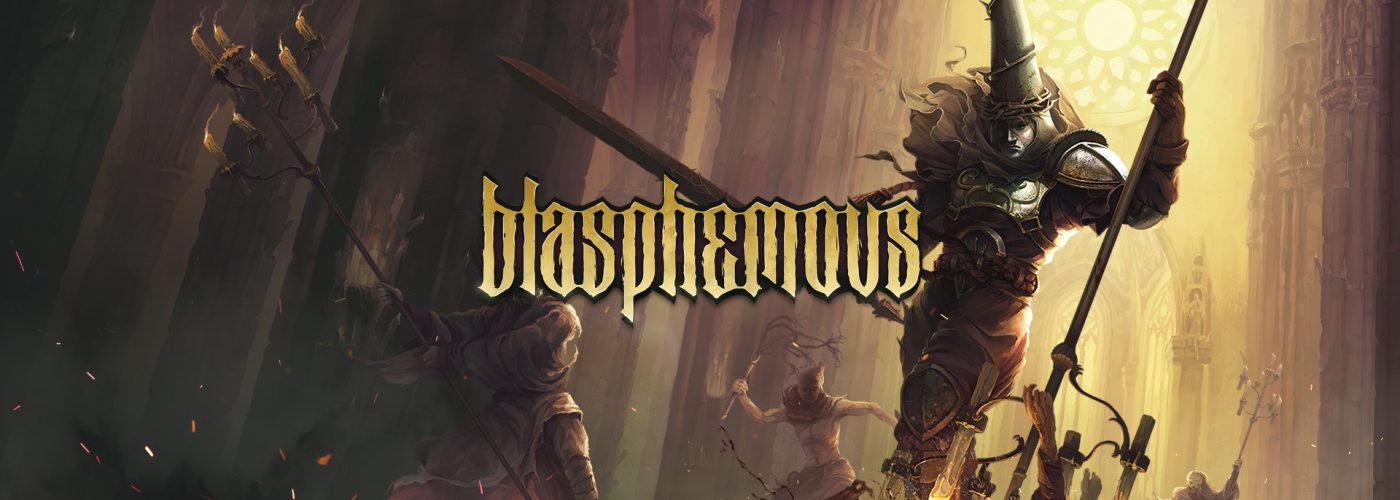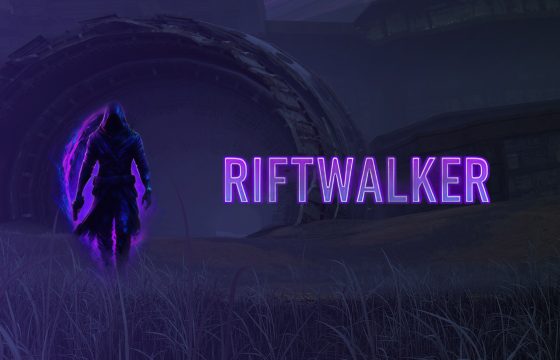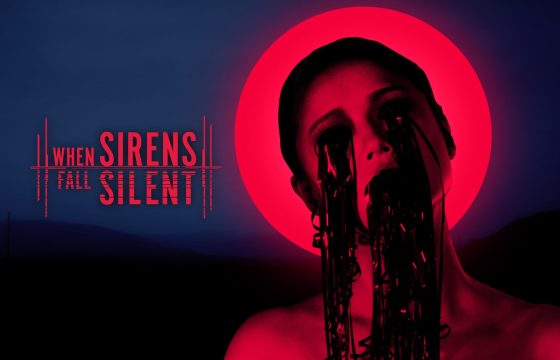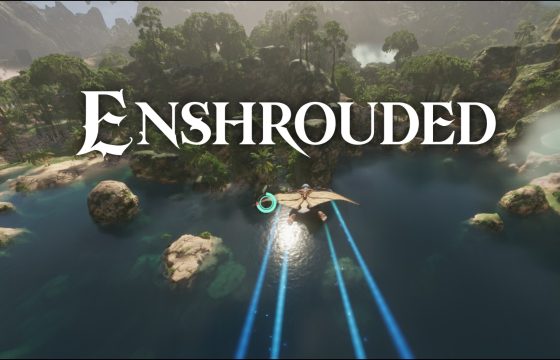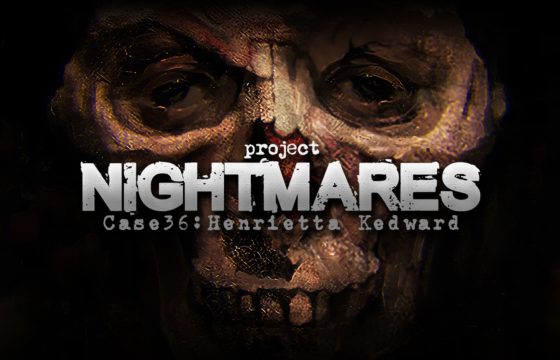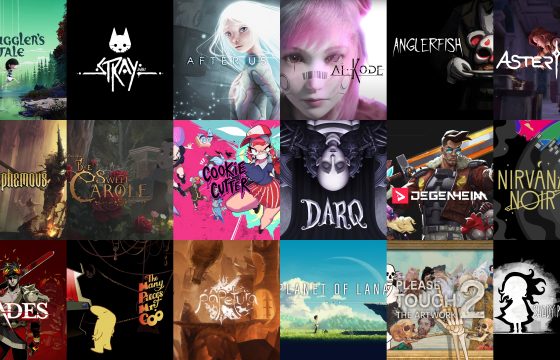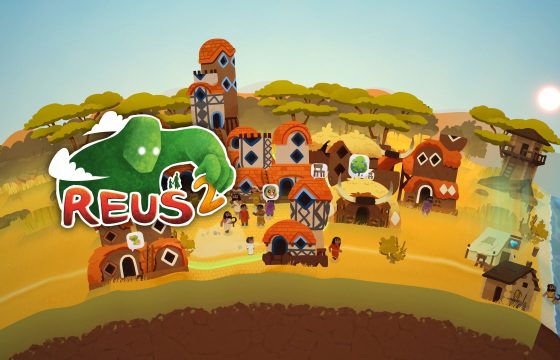In this impressive pixel art Action/Adventure with exquisitely gothic Catholic hues, let us face our sins and repent with tears.
While we wait for the release of Blasphemous 2 (announced at the Gamescom 2021), which is expected this year (2023), it seems appropriate to discuss its predecessor.
Blasphemous, developed by The Game Kitchen and published by Team17, was released on September 10, 2019, for Linux, PC (Microsoft Windows), Mac, PlayStation 4, Xbox One, Nintendo Switch.
It’s a brutal action-platformer in pixel art with macabre and grotesque tones and religious iconography.

THE BLASPHEMOUS ADVENTURE OF THE GAME KITCHEN
The Game Kitchen is an independent game development studio based in Seville, Spain.
The studio was founded in 2010 and has previously released several other games, including the critically acclaimed point-and-click adventure game The Last Door, a playable homage to classic horror writers (Lovecraft, Poe, & Machen). It’s a series of 8 playable episodes, developed using crowdfunding between 2013 and 2016.
The Game Kitchen is known for their attention to detail and their commitment to creating immersive and atmospheric gaming experiences.

They only work in projects that are meaningful to them, always hungry for improvements and with the pursuit of excellence, they are also careful to set reasonable deadlines and workloads for themselves, always putting health first and avoiding burnout.
THE MOST SUCCESSFUL KICKSTARTER CAMPAIGN IN SPAIN
Blasphemous was funded through a successful Kickstarter campaign, which ran from May 2017 to June 2017.
The campaign reached its funding goal of €50,000 within the first 24 hours and eventually raised a total of €346,157 from 7,973 backers.
The success of the Kickstarter campaign allowed The Game Kitchen to fully fund the development of Blasphemous and bring the game to market. It also allowed the studio to add additional content and features to the game, including new weapons, enemies, and boss battles, as well as additional languages and localizations.
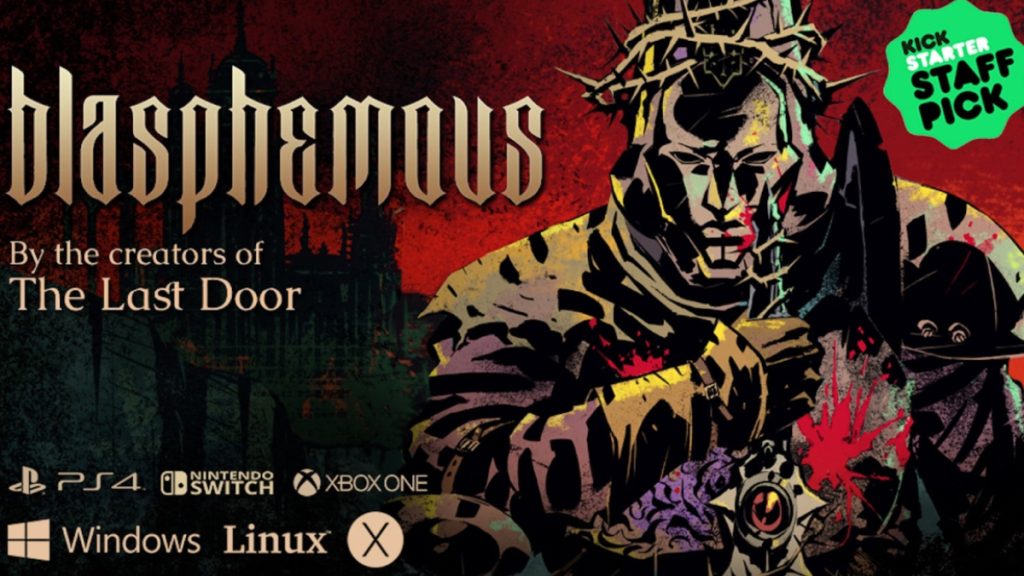
The Last Door campaign had been a success, so why not replicate it?
The Game Kitchen initially presented a smaller version of Blasphemous, despite having intended it to be larger, and given the incredible results, so much so that it achieved the status of “first Spanish video game to have raised so much in a Kickstarter campaign,” they could make Blasphemous the game of their dreams: more complex and limitless.
The bloody theme, which was a bit grotesque and macabre, and the use of special effects, such as the aura of the charged shot, piqued immediately the audience’s interest.
At €120.00, they would have hired Enrique Colinet “Baxa” as a level designer, and once they reached €332.700, the percentage of funds requested was 666%, the ideal number to begin this new and crazy adventure.
They initially received 25 offers from valid publishers, but they chose Team17 because it had a really good history of developers and they immediately demonstrated that they were very involved in the project even on a human level. Furthermore, because they were in the UK, they could finally collaborate with them without regard to time zones.
THE CURSE OF THE MIRACLE
Overall, Blasphemous’ narrative is a compelling and intriguing aspect of the game that adds depth and meaning to the gameplay.
Set in the savage land of Orthodoxia, we take on the role of the Penitent One, a warrior who has been struck down by the Miracle’s curse, during the Age of Corruption.

He must journey through the twisted world of Cvstodia, a place where religion is the most important thing and governs the souls and the minds of the inhabitants, in order to defeat the source of the corruption and lift the curse.
The Miracle is an invisible entity that appears to be a punishing force but in reality follows the desire of those who want to repent and seek absolution through carnal penance.
For example, the woman who pierces her chest with a statuette at the start of the game, and the boy associated with the First Miracle, who seeks pain and is transformed and trapped in the form of a tree. This character is also known as the Father or the Twisted One, and he appears frequently.
Blasphemous’ story is told through a combination of in-game dialogue, cutscenes, and collectible items scattered throughout the world. The story of the game is dark and atmospheric, with religious, faith, and redemption themes running throughout.
The Blasphemous lore is an important aspect of the game, adding depth and meaning to the gameplay experience.
Players who spend the time exploring and collecting all of the collectibles (Warden of the Ossuary) will be rewarded with a better understanding of the game’s world and characters.
In Blasphemous, you will encounter a variety of NPCs throughout the game world. These NPCs can be found in the game’s various towns and locations and serve as a source of valuable information about the game’s world and story and quests or challenges that the player can complete for rewards. They are well-written and fully voiced (Deogracias, Tirso, Virdiana, Candelaria, Altagracias, Blessed Lord of Salty Shores, Cleofas, Diosdado, Gemino, Holy Guardian Visages, Jailed Ghost, Jocinero, Lady of the Six Sorrows, Lvdovico, Redento, Socorro, Nacimiento, Jibrael, Candelaria, Miriam).

The ones who most impressed me are:
- Deogracias: serves as The Penitent One’s guide and mentor. He appears to be an oracle carrying information about the land of Orthodoxia and The Miracle.
- Gemino: is a prisoner of Our Lady of Charred Visage Convent who is housed inside a metal statue.
- Holy Guardian Visages: crated by the Miracle, are three guardians in a floating head form that appear in a dream state.
- Redento: is a member of the Order of the Genuflectors, also known as the Genuflecting Pilgrims. He is a devotee on a painful pilgrimage that represents their form of penance.
A HIGHLY SUCCESSFUL AESTHETIC
Personally, I think it was the initial impact of the graphics that kickstarted the Kickstarter campaign.
Blasphemous features beautifully handmade pixel art, with large sprites and super smooth animations, created pixel by pixel, frame by frame, that gives the game a unique and atmospheric look.
The environments and characters in the game are all intricately detailed, with a wide range of colors and textures that help to bring the game’s world to life.
The pixel art style lends it a retro feel, but the attention to detail and quality of the artwork more than compensate.
The graphics in Blasphemous are a significant strength of the game, contributing to a unique and immersive gameplay experience. The game’s hand-drawn art style stands out and helps to distinguish it from other games in the genre.


There are different artistic inspirations.
The Game Kitchen aimed to create a dark fantasy world that was both recognizable and likable, while also drawing heavily on local folklore.

Also artistic inspirations to great painters like Francisco Goya.

Who are familiar with Catholic mythology and iconography are likely to find numerous references and Easter eggs as they progress through the game.


For example, The Penitent One is a character based on Jesus Christ, with the name referring to the “penitent thief” who was crucified alongside Jesus in the Bible.
Otherwise, Cvstodia, the game’s world, is rife with references to Catholic theology and mythology, such as the use of Latin phrases and the inclusion of characters based on figures from Christian legend, such as Saint George and Saint Sebastian.
It is worth noting, however, that the game contains references to other religious traditions.
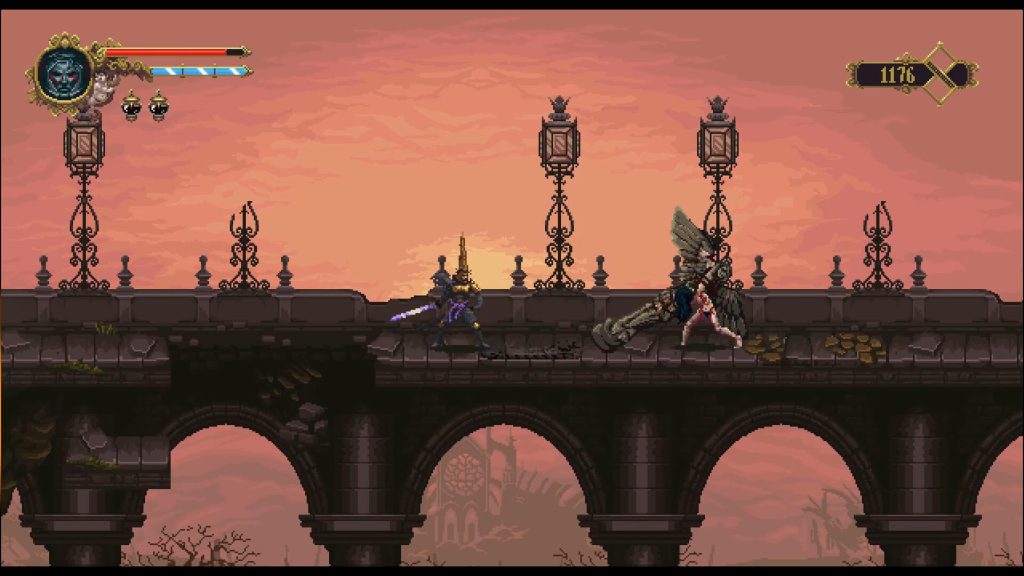
Some of the enemies and bosses in the game are based on figures from mythologies and religions outside of Catholicism, such as the “Toreador,” which is based on the myth of the Minotaur from Greek mythology, or the “Miserable Little Pile,” which is a small creature that carries a large stone on its back. This character is based on the myth of Sisyphus, who was punished by the gods by being forced to roll a heavy stone up a hill, only to have it roll back down again every time he reached the top.
Finally, it seems appropriate to mention the aesthetic origin of our protagonist’s helmet, which is a clear reference to the capirote, the headgear of the Nazarenes and Penitents in the Spanish Semana Santa, understood as the week of Christ’s Passion.

The origins of this garment can be traced back to how the Holy Inquisition intended to punish religious crimes in Spain.
ALL OUR TEARS
Blasphemous’ gameplay is a mix of fast-paced combat, exploration, and platforming.
Platforming elements in the game are challenging but fair, and we will need to use our skills to navigate the game’s numerous traps and obstacles.
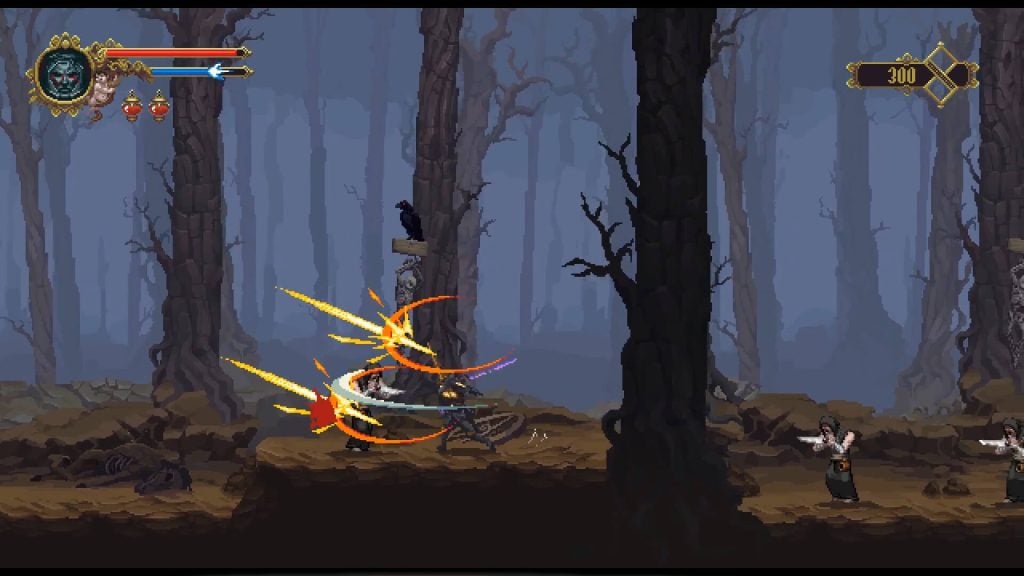
Blasphemous provides a variety of items, gear, and spells to aid The Penitent One’s adventure and battle.
The primary weapon of The Penitent One is Mea Culpa, a sword born of guilt that is used to slash and slaughter enemies with powerful combos and devastating abilities. Passive offensive and defensive effects on the weapon are due to Mea Culpa Hearts. Other passive skills are due to Relics, such as gaining the ability to reveal secret areas.
In addition to the Energy bar, there is a Fervor bar that is charged during combat, by recovering a fragment of guilt or by holding a ranged attack, and which is used to perform special attacks or cast Prayers, categorized as magical spells. Prayers are magical abilities that can be used both offensively and defensively, such as summoning magical-based attacks to deal more damage.
Further perks can be obtained thanks to Rosary Beads that improve The Penitent One’s various stats such as defense, health, Fervor, and many more.
Boss fights are an important part of the gameplay, and they present some of the game’s most difficult challenges. There are a variety of bosses, each with their own unique attacks and patterns that players must learn in order to defeat them.
Here are the bosses that players will encounter in Blasphemous: Warden of The Silent Sorrow, Ten Piedad, Our Lady of the Charred Visage, Exposito, Tres Angustias, Esdras, Melquiades, Quirce, Crisanta of the Wrapped Agony, Escribar, Last Son of the Miracle, The Amanecidas.
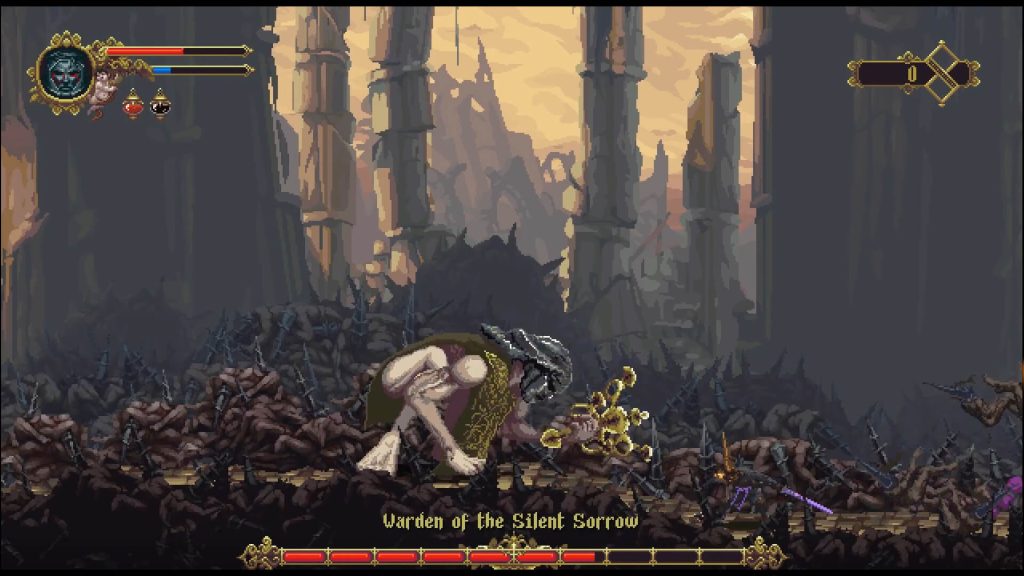
My favs are:
- Warden of The Silent Sorrow: the first boss we meet. It’s a giant who moves like a monkey and wears a green vest, an iron mask, and wields a gold-plated chalice-looking object. Its attacks are slow but powerful, and players will need to avoid its sweeping attacks and find openings to strike.
- Our Lady of the Charred Visage: it appears as a large disfigured and burnt face. She can summon various projectiles against her opponents.
- Melquiades, the Exhumed Archbishop: a skeleton whose followers dress him in colorful and luxurious clothing and accessories. This boss’s weak point is its head, so whenever Melquiades is lifted, you must attack the arms and hands of its followers to bring the boss back down to your reach.
- Crisanta of the Wrapped Agony: is a knight who resembles The Penitent One, and she is a devotee of His Holiness Escribar.
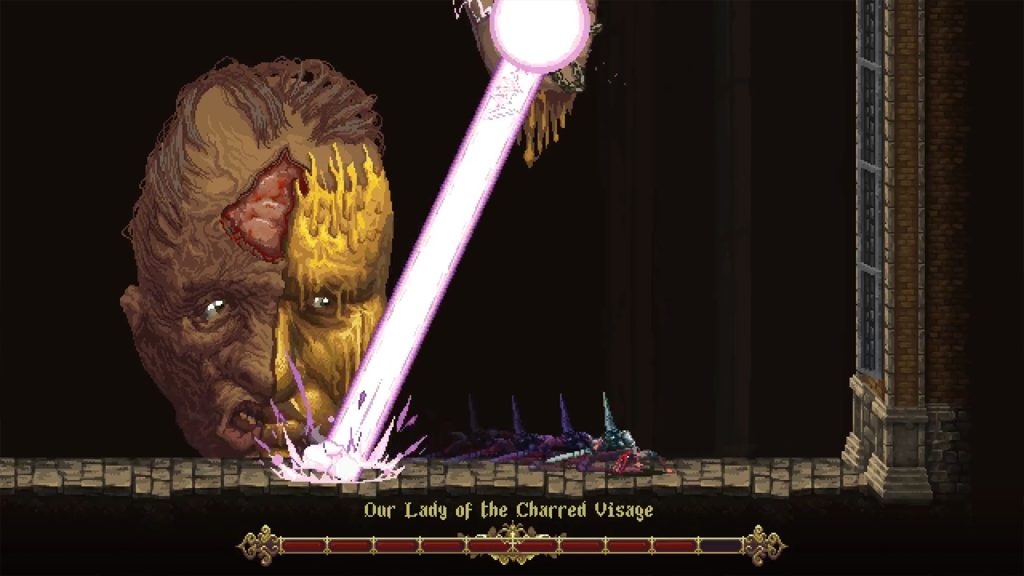
The use of “tears,” a type of currency that players can collect and use to purchase various items and upgrades, is a key gameplay mechanic in Blasphemous. Tears can be obtained by defeating enemies and bosses as well as finding them scattered throughout the game world.
Tears serve as a symbol in the game’s story and themes, in addition to serving as currency. The game’s world and characters are heavily influenced by Catholic iconography and mythology, as we said, and the name “Blasphemous” refers to the act of speaking or acting against a deity or religion. In this context, the tears that the player collects could be interpreted as representing the game’s characters’ suffering and sacrifice, as well as the player’s own role as a savior or redeemer.
CONCLUSIONS
The soundtrack of Blasphemous, composed by Carlos Viola, is a standout feature of the game and helps to create a unique and atmospheric audio experience for players. The game’s more contemplative tracks are characterized by their use of haunting melodies and ethereal soundscapes, which help to create a sense of dread and unease as players explore the game’s world. The battle music, on the other hand, is fast-paced and intense.
Blasphemous is an extremely evocative and bleak game that is also fun and addictive. I’m not a big fan of pixel art, but it’s used so cleverly and well here that it stands out among the main features.
The gameplay can be difficult at times for those who, like me, have little experience with this type of video game, but it is ultimately satisfying and adrenaline-pumping.
The atmosphere is undoubtedly the most important aspect, in this perfect combination of more than adequate music and iconographic choices that border on the grotesque without ever being too cringe, except for him:
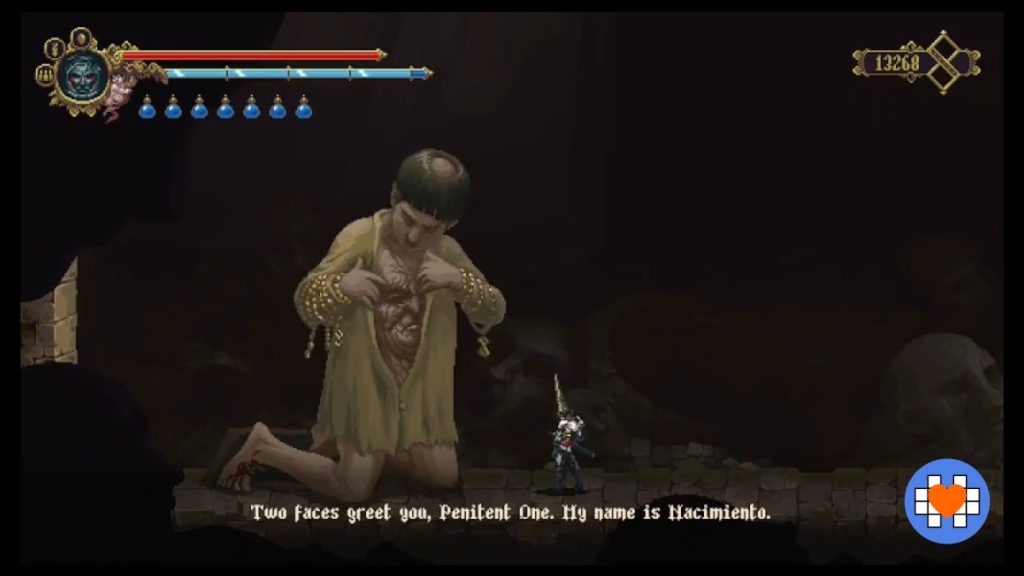
Useful link:
The Game Kitchen Official Website
BLASPHEMOUS
PRO
- Fast-paced and satisfying combat
- Beautiful and detailed pixel art style
- Atmospheric and creepy world
- Compelling and atmospheric soundtrack
CON
- Highly challenging difficulty at times

